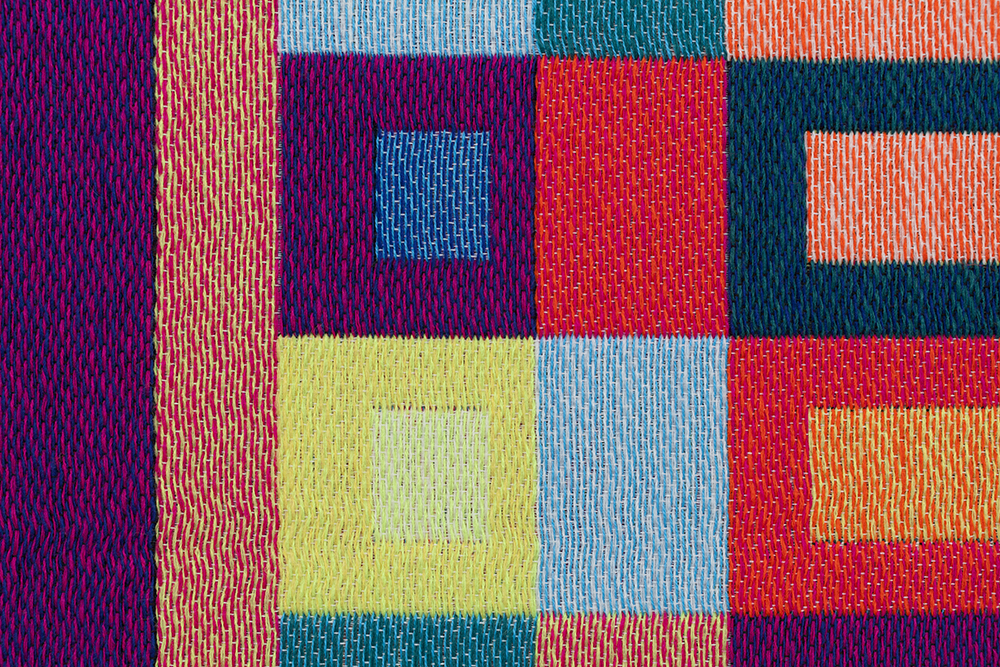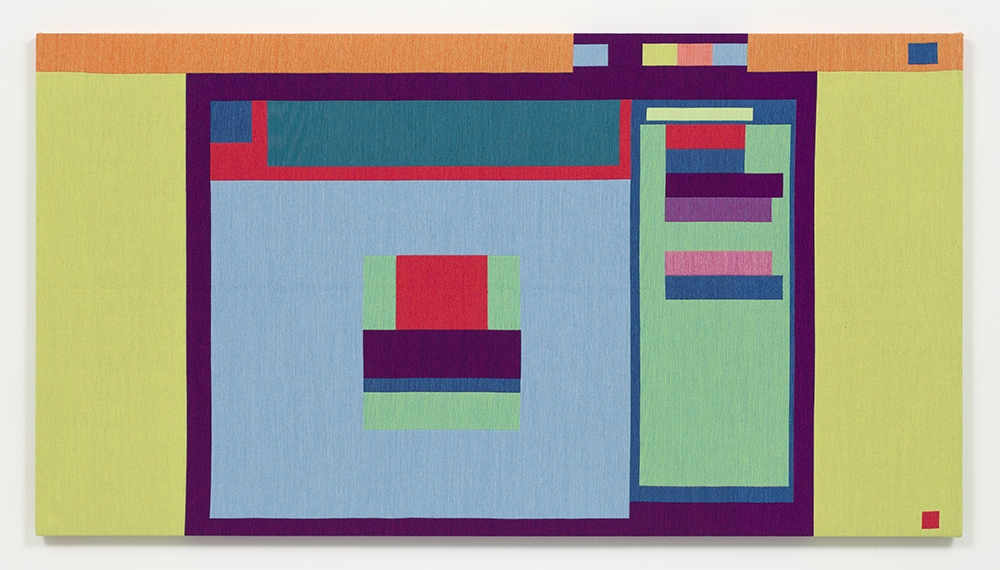By Noémie Jennifer
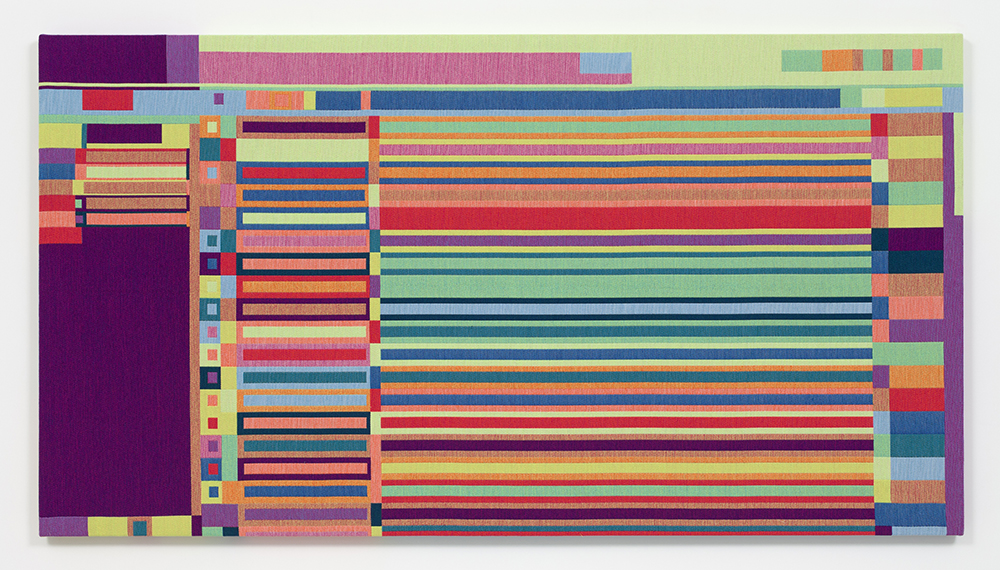
In a new show hanging at Steve Turner Contemporary in Los Angeles, Rafaël Rozendaal’s Abstract Browsing goes offline. The free Chrome extension was released in 2014, and transforms the web into an abstract collage of bright rectangles in randomized colors. Rozendaal, who uses the plugin every day and keeps an archive of his favorite screenshots, sifted through his collection and selected six compositions to turn into Jacquard woven tapestries, each nearly 5 x 9 feet.
“I try to find strange compositions, compositions that a human would not come up with,” explains the artist. “For this exhibition I selected sites that I visit very often. This is what I look at all day—my inbox, social media, the feeds. I want to be honest about modern life; we look at our inboxes much more than we look at mountains or forests. Apparently browser windows are more fascinating than real windows.”
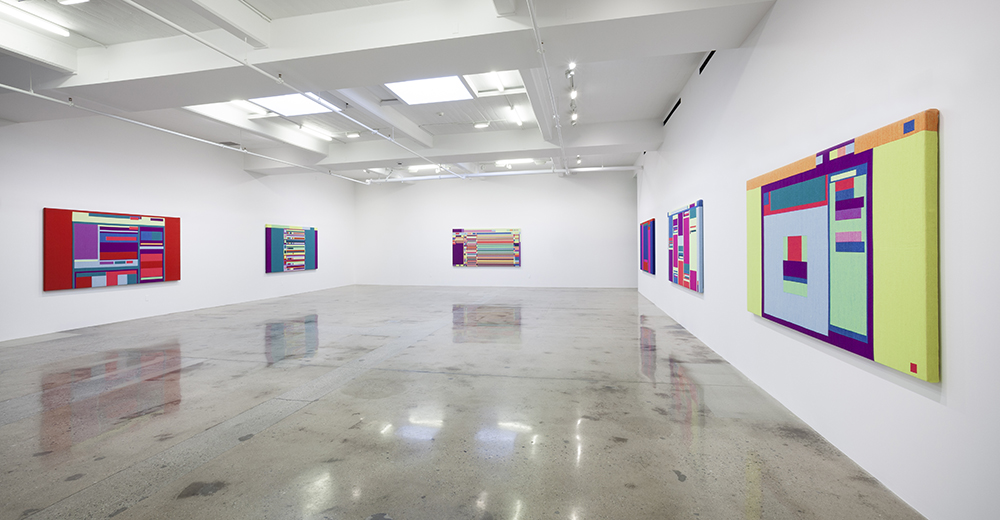
The plugin was born out of Rozendaal’s interest in manipulating perceptions of the web. “In the early days of the web you could browse without images, to save bandwidth. I thought the reverse would be interesting: less information, just images.” With Abstract Browsing, the overall structure of a page is retained, but all text is erased, and content becomes color. “The information superhighway without the information,” remarks Rozendaal.
While randomly selected by the plugin each time a page is loaded, the colors are pulled from a preset palette—what the artist calls his 10 primary colors. “They are the 10 colors that are most essential to me of the 16,777,216 colors available on the web. I usually work with colors that are very bright, saturated, and high in contrast.”
When planning for the transition from screen to object, the Jacquard weaving process seemed a natural choice for the artist. “Jacquard weaving is considered an important step in the history of computing. The punch cards used for the fabric patterns in the weaving were invented in 1801. This is, to my knowledge, the first digital image format. It is binary information that is mechanically rendered,” explains Rozendaal.
Generating those vivid colors with a loom, however, proved more challenging than typing in a set of hex color codes. Rozendaal worked with expert technicians at the TextielMuseum in Tilburg, in the Netherlands—a city known for centuries as the Dutch capital of woollen textiles, up until the industry collapsed in the 1960s. Today, an old factory houses this cultural institution that is “part museum, part workshop,” where Rozendaal generated hundreds of combinations of fibers, eventually settling on 23 final color combinations. Acrylic fiber was chosen for its bright colors, volume, and strength.
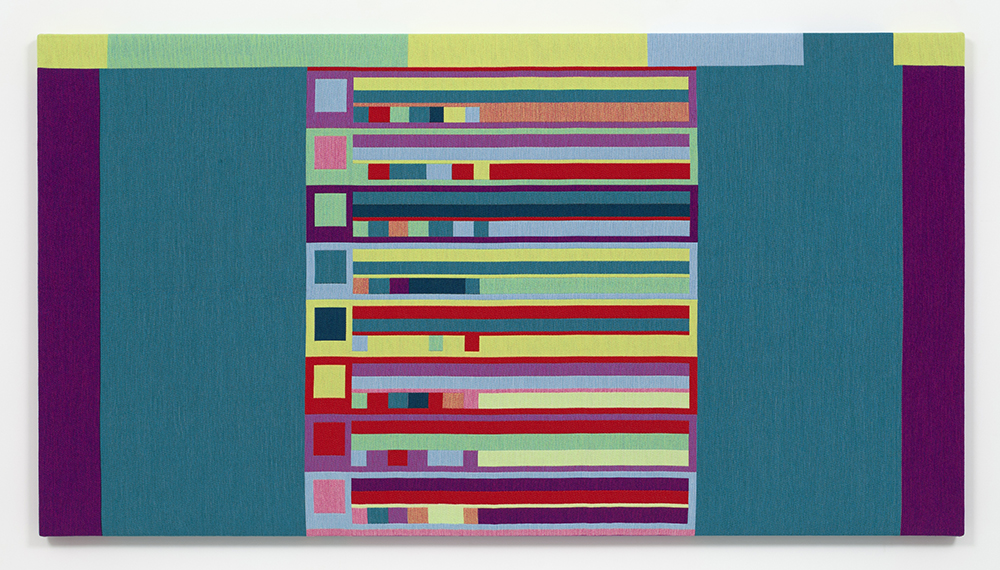
“My goal was to create colors that appear to vibrate because they are built up from smaller parts, like dithering in a .gif file. It’s hard to experience these tapestries in documentation; it really is a very physical experience to view them.”
Los Angeles locals can experience those color vibrations at Steve Turner Contemporary until February 6. Meanwhile, the rest of us will have to settle for on-screen viewing.
